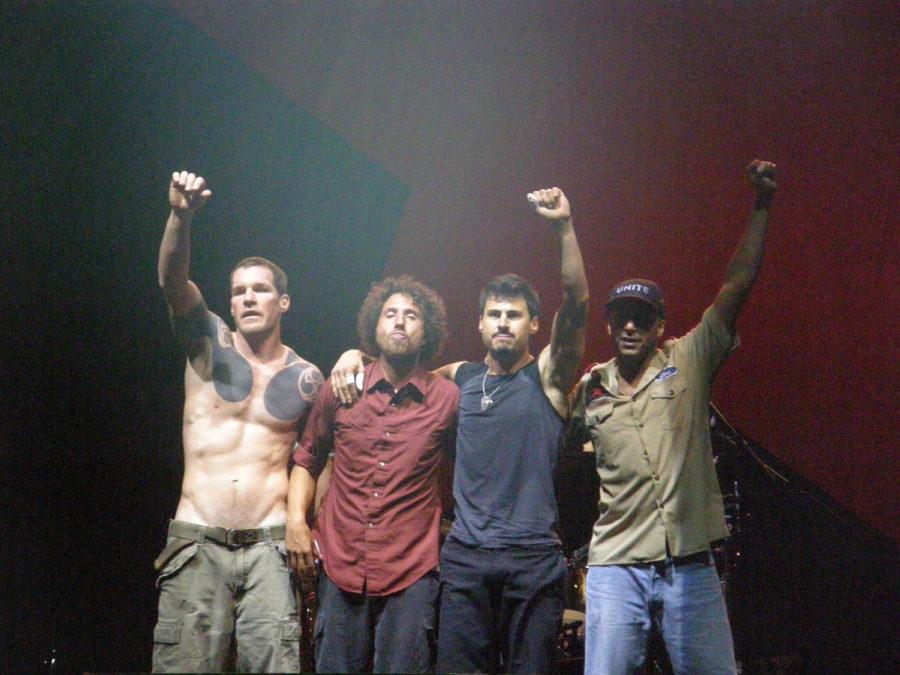- App Content
- App Content / Lifestyle
- App Content / News
- App Content / Quickies
- Limelight
- Limelight / Digital
- Quickies
History has its eyes (and ears) on you: A history of American protest music
Rage Against The Machine
February 2, 2017
This Friday, music streaming site Bandcamp is donating all of its proceeds from album and song purchases to the American Civil Liberties Union in the wake of President Trump’s recent immigration ban, as well as releasing an album with songs by artists from countries that are affected.
Musicians, and the American music scene as a whole, contributing to the protest effort is not new. In fact, protest music has been around since the nineteenth century, dealing with war (specifically the Civil War), women’s suffrage and abolition. Many contemporary protest songs still deal with war, but also comment on prominent and often controversial social issues. Here’s a timeline of the American protest song, and some of the most famous ones in the nation’s musical history.
1900-1920
During the first half of the twentieth century, protest songs asked for fair wages and better working conditions as the American working class attempted to unionize. The most famous song of that period was called “Bread and Roses”, written in reference to a strike at a textile mill in Lawrence, Massachusetts, known as the Bread and Roses strike. Protest songs in the later decade centered on World War 1, and the United States’ decision to enter the war. The song “I Didn’t Raise My Boy to be a Soldier” voiced American skepticism and concern for young men going overseas to fight.
1920-1930
The 1920s and 1930s saw both the growth of unionization and the increase in poverty due to the Great Depression and the Dust Bowl. Folk singer Aunt Molly Jackson sang with striking coal miners in the South, and wrote songs that depicted the struggles of miners and other impoverished Americans during the Depression. This time period also marked the rise of anti-lynching songs, with the most famous being Lewis Allan’s “Strange Fruit”, which was later recorded by Billie Holliday.
1940-1950
Music during this time continued to protest social issues like labor, race and class. However, protest singers were gaining a larger profile, and were facing opposition from McCarthyism head-on. Among the most famous protest singers of the time was Woody Guthrie, whose songs were pro-union. It was also at this time that African Americans came to the forefront of protest music, with singer Josh White being one of the first to establish himself as a singer of political blues.
1960
The 1960s brought about many opportunities for protest music, especially with the rise of the Civil Rights Movement and tensions due to the Vietnam War. Bob Dylan was a key figure in the protest music scene, with his songs “The Times They Are A-Changin’” and “Just a Pawn in Their Game” telling mostly about racial injustices going on at the time. Phil Ochs was another key protest singer of the era, appearing at numerous anti-Vietnam and organized labor events in New York, and often drew inspiration from spirituals to fit the music to the political mood of the time.
1970
Protest music centering on the Vietnam War was the most common kind during the 1970s, with songs like Jimi Hendrix’s “Machine Gun” and “Ohio” by Crosby, Stills, Nash, and Young voicing outrage towards the country’s involvement in Cambodia during the war. While Vietnam dominated the subject matter of 1970s protest songs, the women’s liberation movement had some music to it, with Helen Reddy’s “I Am Woman” being one of the more famous women’s liberation songs.
1980
The 1980s were not only laden with material for protest music, but also the time of a new genre of music being born: rap. While artists like Bruce Springsteen and The Ramones were protesting the Reagan administration, and Lee Greenwood was protesting the protests with “God Bless the U.S.A”, artists like Public Enemy and N.W.A gained musical prominence. In addition to hip-hop, punk music was a strong voice in the protest scene, with bands like Dead Kennedys and Bad Religion developing a heavier sound to match the tone of the time. However, the most notable punk protest song of the 1980s is Patti Smith’s “The People Have the Power”.
1990
The 1990s birthed one of the most popular social commentary bands in recent years: Rage Against the Machine, whose songs centered on corporate greed, government oppression and Imperialism. The 90s also saw an increase in pro-women protest songs and songs relating to sexism and homophobia, in addition to the typical topics of race and war. Ani DiFranco’s “Lost Woman Song” was a hot topic in the abortion conversation at this time as well.
2000s
In a post-9/11 world, protest songs gained a new popularity, with bands like R.E.M returning to their politically charged roots and taking on issues like the Iraq War and the actions of the U.S government. The Decemberists took on foreign policy issues in the song “16 Military Wives”, and in 2004, Green Day released American Idiot, which could be considered an entire protest album, due to its extensive criticism of the Bush administration and the Iraq War. Rap and punk continued to play a role in protest music in the 2000s, continuing to criticise the Iraq War and later race issues that arose in the recent decade.
















